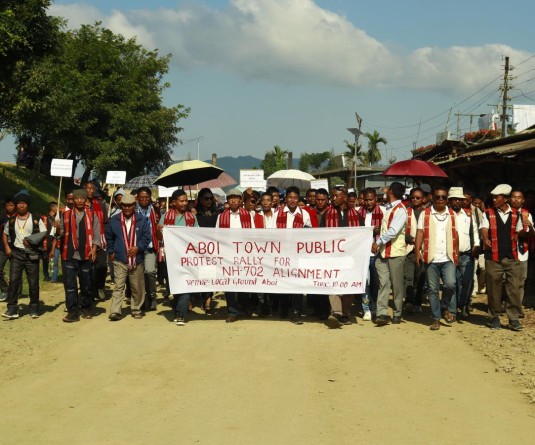
Karbi Anglong orgs appeal govt for compensation & long term development
Morung Express News
Diphu/Dimapur | August 27
A joint team of civil society organizations from Karbi Anglong district in Assam have now urged government authorities for “immediate relief and rehabilitation” for the flood survivors of east Karbi Anglong’s Nilip constituency.
The joint team consisting of Karbi Students’ Association, Rengma Naga Students’ Union (RNSU), Dimasa Students’ Association, Kuki National Assembly, Asom Jatyabadi Yuba Chatra Parishad, Students and Youth Council, Hills People’s Cultural Forum and Hills State Demand Council (CWC) visited the flood affected areas on August 25-26.
Flash floods on the wee hours of August 16 led to considerable damage of paddy fields, houses and loss of livestock in Rengma and Karbi villages, including Rechangari, Khanari, Khonwani, Choshengtongri, Ridongü, Phangcherop, Mai Gaon, Lakhiram Gaon, Chekso and Hanse Gaon.
“People were left homeless, and without granaries to survive through the winter,” stated the RNSU in a press release from its President, Phenpiga Rengma, and General Secretary, Thangshi Jishing, following their visit. This information had been shared with the District Administration of the Karbi Anglong Autonomous Council (KAAC), National/District Disaster Management Team and the Joint Director of the Medical Department on August 17 by the RNSU team, it stated.
owever, “no relief such as medicines and food supplies had reached the affected villagers.”
The joint team of the above mentioned organizations has now demanded that compensation for property loss and valuable assets, including livestock, be provided by the government immediately. They have also called for “immediate developmental schemes” for the area as well as basic amenities like a public healthcare centre, PHE, PWD, irrigation, agriculture and housing services which are conducive for the “welfare and wellbeing” of the people.
“We held a public meeting at Khanari Village and distributed some rice bags and potatoes to the severely hit victims. Our vehicles could reach only till Phangcherop Village. Rest of the villages could only be covered by foot,” stated the RNSU. It also informed that many people in the villages are suffering from diarrhea and viral fever, even as they cannot access basic healthcare—this area has no bridges across damaged roads, no electricity, no healthcare facility or any developmental activities whatsoever.
Handicap in governance
An officer at the Sub Divisional Office (Civil) in Bokajan, while speaking over the phone, acknowledged that the KAAC has not given enough attention or resources to this region. “With no roads or mobile connectivity, it is difficult for us to carry on governance work in this area that has more than 25 villages spread over a vast underdeveloped area,” he said, adding that their office has been instructed by the Medical Department to make visits to the villages every 2-3 days but they are unable to do so due to lack of connectivity. “It is a big handicap for us,” he admitted.
Another officer from the Assistant Revenue Office (ARO) of the KAAC who made a visit to the flood affected areas in the Naga Rengma Mouza, soon after the floods, was equally shocked by the conditions. “I had visited that area once in 2001. It is still exactly the same,” he said. The ARO team, along with the Agriculture and Veterinary Departments, has already made and submitted a detailed report of the damages but no action has come from the KAAC or its district administration so far. 96 families have been affected in various ways with large swathes of paddy fields completely damaged.
“The paddy fields have become riverbeds as the river has changed its course,” noted the officer, who explained how the government team, which had visited on August 18, had to cross three rivers and walk several more kilometers to assess the situation.
“The government has not looked after this area at all. They don’t even have water supply or electricity. They only depend on cultivation for their food and earn some money from selling Raja Mircha, oranges etc. for which they have to go 40km in such conditions to access the market in Silonijan. This year everything is destroyed. How will they survive?” wondered the officer.





